Juniper Chinese "Strikta": description, planting and care
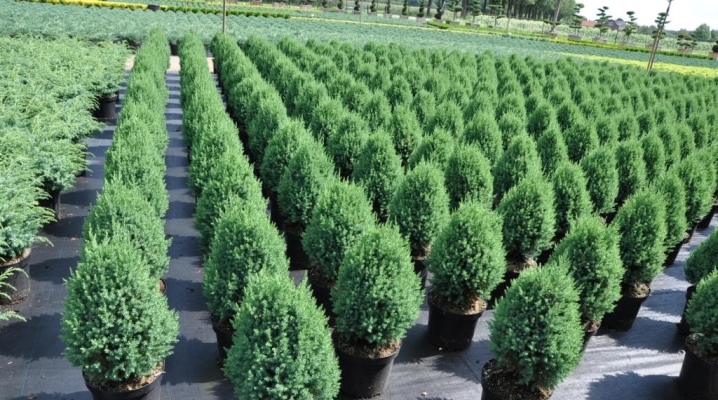
Junipers are one of the most promising crops in garden design. The varieties bred several decades ago are especially attractive. However, each such plant must be dealt with separately, and "Strickta" juniper is no exception.

Peculiarities
The Strickta juniper variety was developed in the Netherlands in the 1950s. The elegant looking geometry of the crown and atypical colors of the needles allowed the culture to gain great popularity all over the world. The Chinese juniper is a dwarf tree. The slender cone is crowned with a dense symmetrical crown. It consists of thin branches growing at an acute angle. Sharp thin needles are soft and are colored green-blue.
In the cold season, it changes to a gray-blue color. In the description of the "Strickt" juniper, one cannot fail to mention the difference between its male and female specimens. In the first, the crown looks more like a column, and in the second it is characterized by spreading. In late summer - early autumn, a lot of dark blue cones ripen on the "Strict".
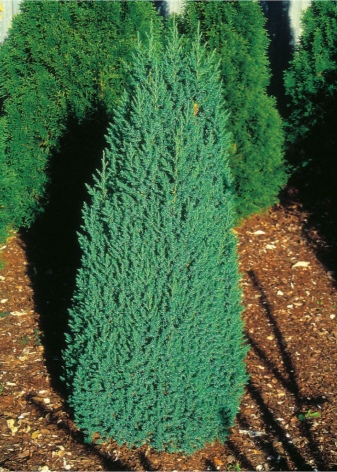
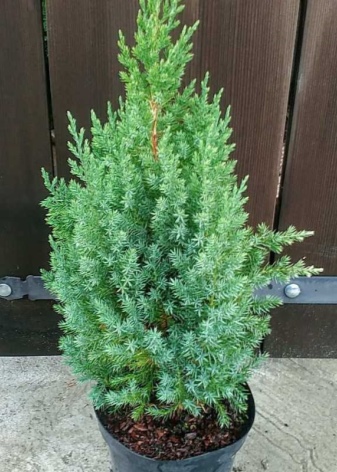
These berries are covered with a whitish waxy coating. The diameter of the fruit is about 8 mm, 3 seeds are hidden inside it. Important: Strict berries have only decorative value, they cannot be eaten.
There is a related culture to the described variety - "Strickta Variegata"... The height of a Chinese tree can be 2.5 m, while the crown size reaches 1.5 m. These dimensions allow the use of plants as part of hedges. A feature of the plant is its developed root system. Thanks to her, the culture is excellent for reinforcing erosion-prone soils. But it must be borne in mind that the roots of a coniferous plant are extremely sensitive. In the air, they will die off rapidly; therefore, for planting it is advised to select plants that have grown in containers.
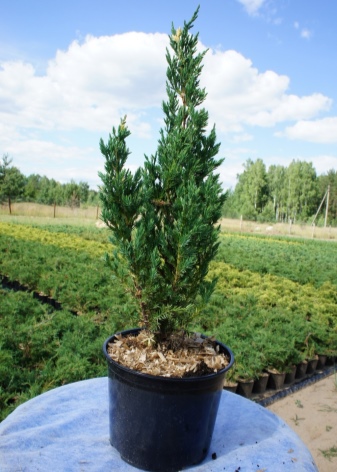
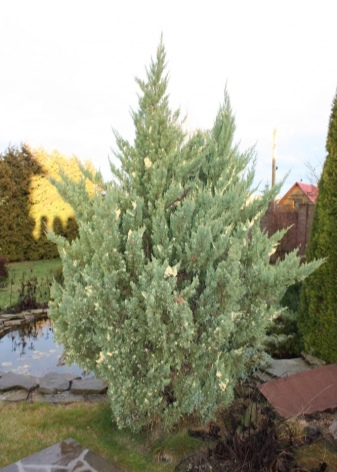
Chinese Juniper helps purify the air and eliminate pathogens... No wonder it is actively used in sanatoriums and health resorts. But we must remember that needles, like fruits, contain a certain amount of toxins. Unpleasant consequences may occur with direct exposure of the skin and mucous membranes to the "Strita" juice. That's why it is recommended to work with juniper strictly with gloves and subject to other precautions.
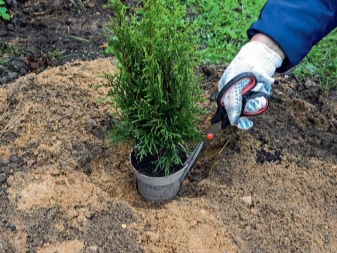
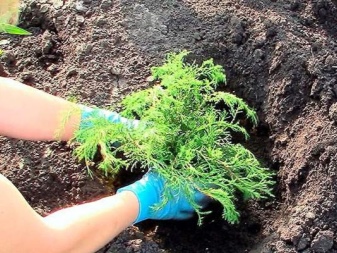
It is better to protect minors from contact with him in general. This is not to say that the "Strickt" juniper is growing rapidly. But mature trees have a faster growth rate than young seedlings. However, even at the peak of development, the annual growth cannot exceed 0.05-0.07 m. But a small height is not too fundamental - in the conditions of our country, the frost resistance of this culture is very valuable.
Use in landscape design
Floral compositions in oriental styles are rarely created without Chinese juniper. But the beauty of this plant allows it to fit into the garden, decorated according to the classical European canons. "Stricta" is used in:
alpine slides;

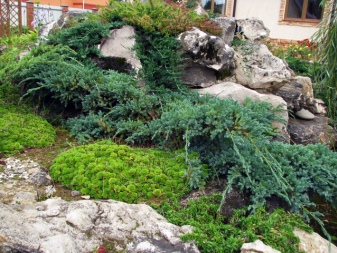
- rockeries;
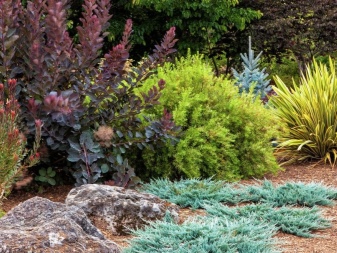
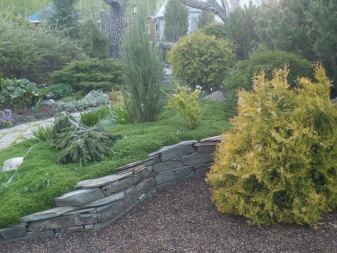
- tapeworms;
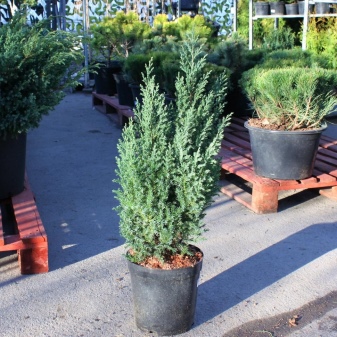
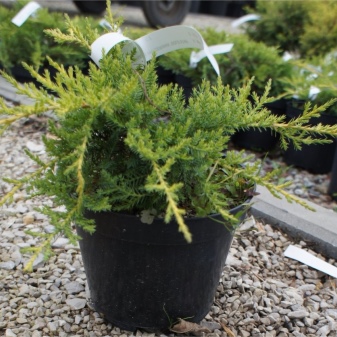
- graceful ensembles.
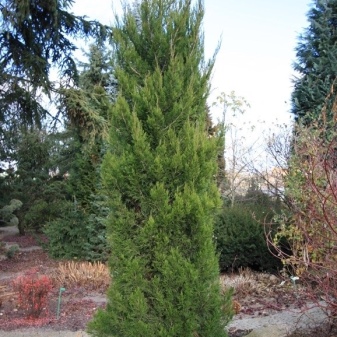
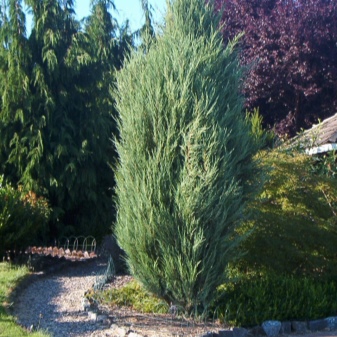
The use of wood in hedges is facilitated by the extensive crown shaping possibilities. But there is one more option - to plant "Strickta" on the terrace or on the balcony, where it will look no less attractive.Returning to garden landscaping, it is worth noting that the classic use of juniper involves combining it with barberries or cotoneaster.
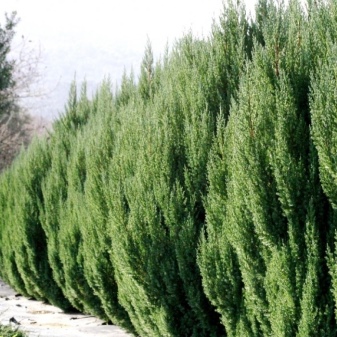
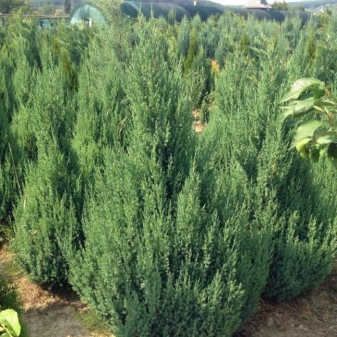
How to plant?
The landing of the Stricta does not cause any particular difficulties. However, we must remember that the choice of a land plot and its preparation are very important. Juniper is photophilous. Moreover, its needles do not tolerate direct sunlight. They can create especially many problems for young plants, which is why a thoroughly ventilated partial shade is considered the best place. "Strickta" should be planted in neutral or slightly acidic soil.
It is necessary to carefully choose the seedling itself. The best specimens are grown in nurseries and garden centers. It is recommended to take there planting material with a closed root complex. Not necessarily a container culture - a simple "lumpy" version will do.
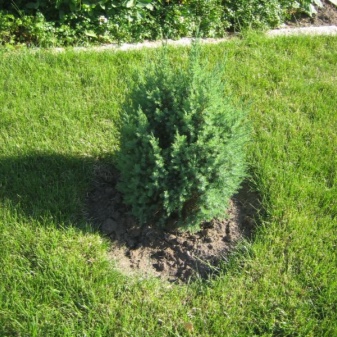
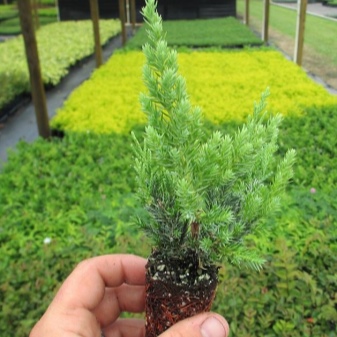
A good seedling always has visible young shoots. But the presence of dry and brittle branches is unacceptable. As well as deformed, dry sections of the trunk are unacceptable. The optimal time for disembarkation is the spring and autumn months.
Planting material with open roots, if there is no other choice, is planted immediately after purchase. This will reduce the risk of overdrying the root system. But container juniper seedlings are less demanding in this sense, and can wait a while. The order of work is as follows:
- they immediately choose the final place (since junipers do not respond well to transplantation);
- prepare a hole 2-3 times larger than an earthen lump;
- when planting 2 or more junipers, the holes are separated with a distance of 1.5 to 2 m;
- lay drainage in a pit (pebbles or brick breaks will do);
- deepen the seedling, making sure that the root collar does not go underground;
- sprinkle "Strickta" with a sand-sod-peat mixture;
- shelter plantings from the sun and water abundantly.
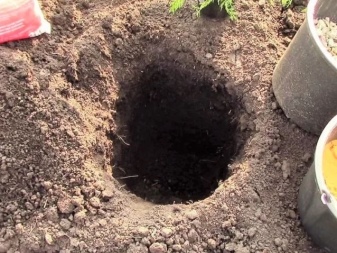
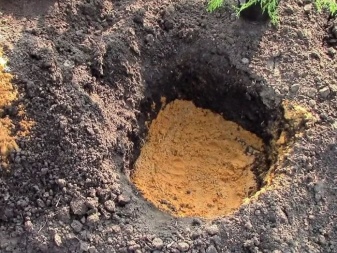
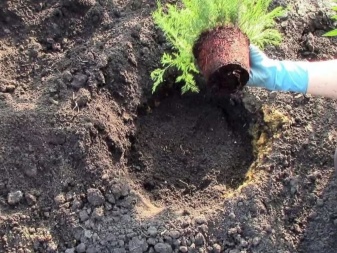
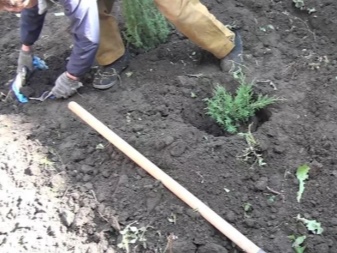
How to take care of it properly?
The Chinese variety "Strickta" does not have any special requirements for humidity and can tolerate drought well. But in the first 2-3 months after planting, systematic watering is required, with a lot of water. If a dry summer comes, then 30 liters of liquid are spent on each tree. But over-irrigation is dangerous for juniper. Therefore, when cultivating it in group plantings, either only this one variety is used, or plants with a similar water regime are selected.
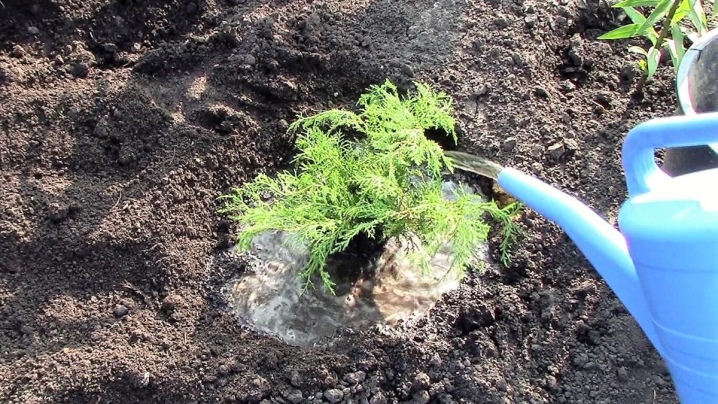
In order for the care to give the proper result, "Strict" must be protected from contact with dry air. If the humidity is low, you even have to often spray the crown with a spray bottle. But at the same time, the ingress of water on the needles is unacceptable. Spraying is advised to be carried out in the morning or evening hours, when there is no bright sun.
Fertilizers need to be applied only once during the growing season. The optimal dates are the last days of April or early May. Experts advise using universal sets of minerals for coniferous crops. It is not necessary to mulch "Strickta". If the land begins to dry out too quickly, the frequency of watering is slightly reduced and the weeds are carefully removed. Moisture retention mulch is only put in when these measures do not help.
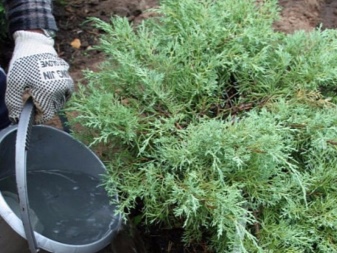
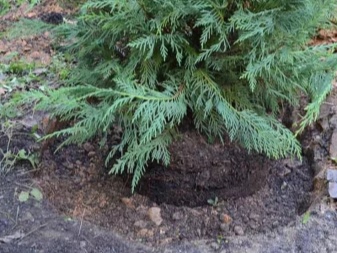
The best mulch option is pine chips or bark... Since the roots develop strongly, the soil should be loosened only near young shoots, and then to a shallow depth. A shaping crown cut gives good results. In landscape plantings, pruning is needed regularly. From hedges, if no other task is set, only withered branches are removed. The optimal time for a haircut is the beginning of spring, before the juices move. You need to remove no more than 1/3 of each shoot.
The only exceptions are diseased and dry branches. To prevent the incisions from becoming entrance channels for fungal infection, the crown is treated with standard fungicides. Despite the general resistance to winter, you still need to prepare for it.
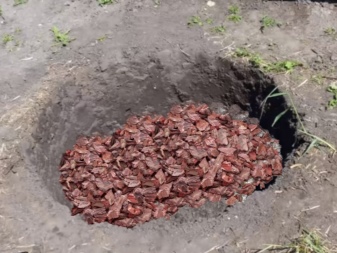
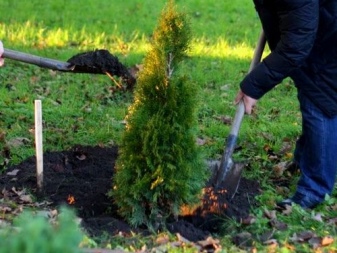
When cold weather approaches, the trunk circles are covered with peat, the layer is made thicker. Young seedlings are advised to cover with spruce branches to the very top. To avoid branches breaking under snow load, they are tied to the trunk. If very severe cold weather is expected, agrospan or burlap is used to insulate the plantings. It is advised to clean the shelter no earlier than half of April.... It is worth choosing for this It's a nasty day, then the adaptation to natural light will be better.

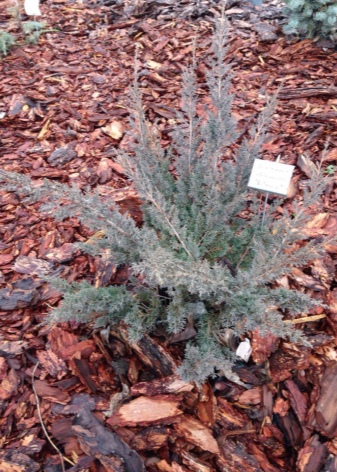
A separate conversation deserves the care of the room culture of junipers. Immediately after purchase, the seedling is immediately transplanted into a slightly larger container. The soil should only be designed for conifers. Drainage is poured into the bottom of the pot. If this is not done, harmful stagnation of moisture will occur. A little mulch is sprinkled on top of the earth and liquid fertilizer for conifers is poured. Potted "Strickta" is not watered too actively. In the summer months, watering is carried out as the land dries up, and in the winter - a maximum of twice a month.

Spraying the crown of a house tree from a spray bottle is mandatory. You can do this 2-3 times a day. During the winter months, juniper pots are removed as far as possible from heating appliances. Fertilizers are applied from March to August, with an interval of 14 days. The best option is to dissolve mineral fertilizers in irrigation water.
The pots are kept in sunny windows. In the summer months, direct sunlight should be excluded from the crown. In the room where the juniper is grown, from June to August inclusive, the temperature should be maintained up to +25, and in winter - up to +13 degrees. As the plants grow, they are transplanted into larger pots each spring. But at the same time they are closely watching so that the root system remains intact, otherwise the juniper may develop serious illnesses.
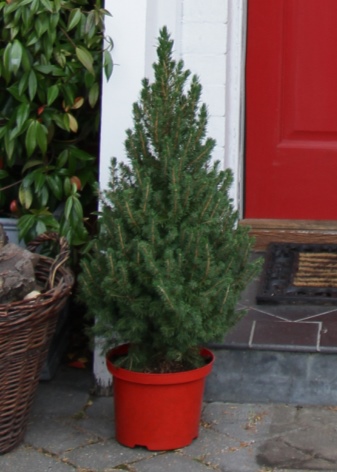
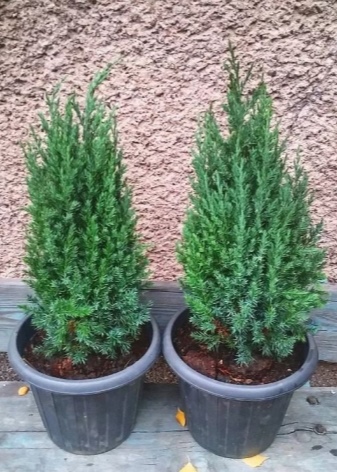
Reproduction methods
Only professional agronomists or breeders have chances to cultivate Strickt juniper with seeds. Ordinary gardeners will need to use cuttings. The stocking of breeding material takes place in the spring. Take branches 1 year old, and after separation they are rooted in a sand-peat mixture. If "Stricta Variegata" is selected, it is better to propagate it by layering. Low branches spreading along the ground are laid in the furrows.
To fill these furrows, a sand-peat mixture is used. Ordinary soil is poured on top. The tops of the seedlings are pinched. If everything is done correctly, and gardeners show due diligence and patience, the branches will soon turn into independent juniper sprouts.

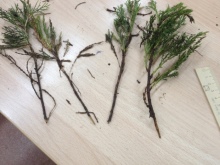

Diseases and pests
The unpretentiousness of "Strickt" junipers pleases, but nevertheless, these hardy plants in general can be very sick. Fungal infections are especially dangerous. At the moment, agronomists know about 30-40 types of fungi that infect junipers. In addition to specific manifestations, all fungal lesions have a common feature - first the middle turns yellow, the needles growing there. Soon they will dry out and begin to fall off, and then it will affect whole branches.
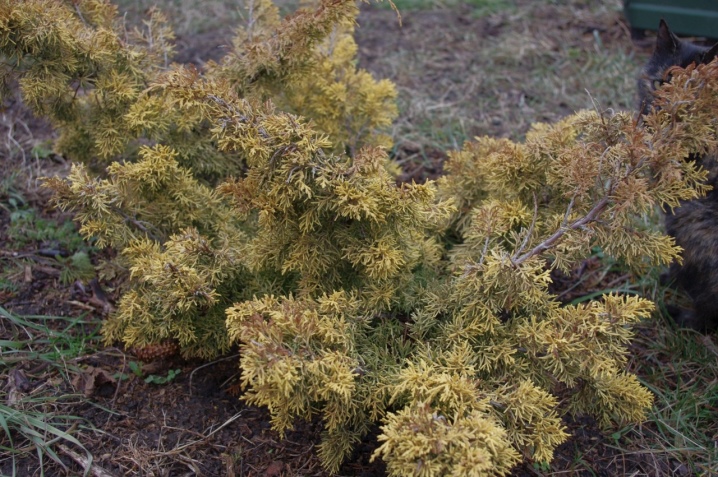
It may seem that the plant is drying out due to a lack of moisture. But if watering is already sufficient (or its activation does not help), special treatment of the tree is required. It is specific for each type of pathogen. We'll have to get rid of all the infected parts. Diseased trees are treated with suitable fungicides. The same drugs are advised to be used for preventive treatment of the site.
Rust is expressed in the appearance of brown growths, covered with an orange-golden coating. They are found not only on the trunk, but also on the shoots and inside cracks in the bark. As the disease worsens, the diseased parts dry out, the needles turn brown and crumble.
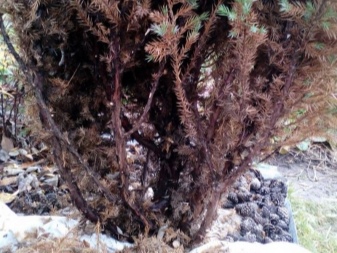
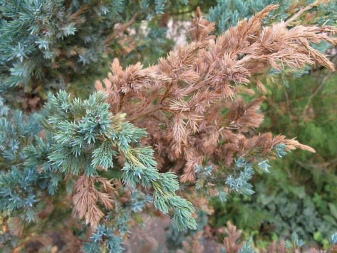
Fighting rust is possible with the help of "Arcerida"... It is used 4 times in a row, with breaks of 10 days between treatments. Treatment should be started as early as possible.Otherwise, the chances of success are rapidly diminishing. You also have to beware of drying out the branches. Because of this disease, both bark and needles dry out. The main measures to combat it:
- cutting and burning of diseased shoots;
- disinfection of sections with copper sulfate;
- additional treatment of incisions with garden varnish or with a paste-like preparation "Ranet".
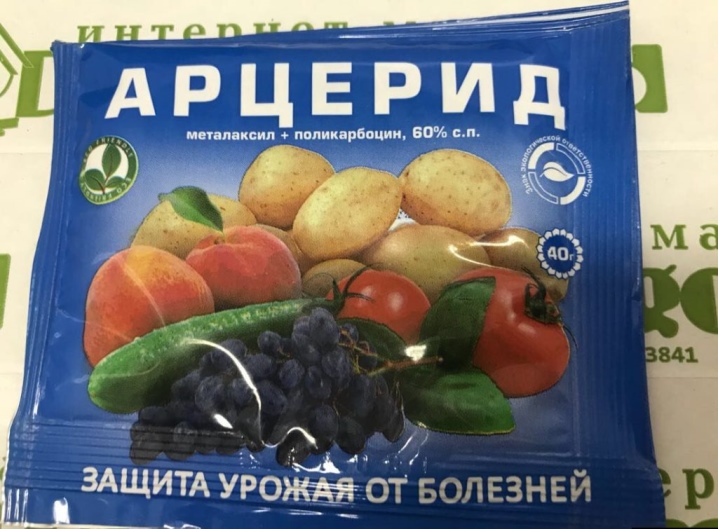
For prevention, it is advised to use Bordeaux mixture at a concentration of 1%. It can be replaced by synthetic drugs. Hom, Abiga Peak. Infection with brown shute is expressed in yellowing of old needles, while the needles do not crumble. The affected branches will have to be cut. Plants are treated in the same ways as when the shoots dry out - usually in spring and autumn, and with a strong development of the disease also in summer. It is necessary to be afraid of the appearance of a shute against the background of damp cool weather. That's why, if rainy days are established, the juniper will have to be inspected daily.
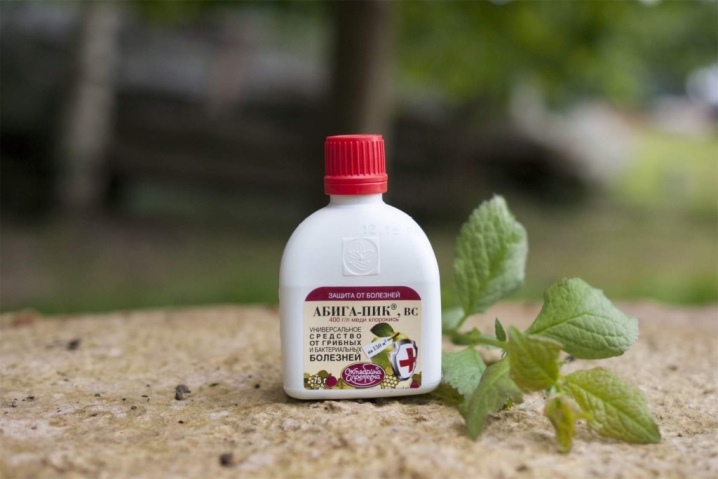
Bark necrosis, also known as nectriosis or noncritical cancer, affects mechanically damaged trees. The external manifestation of the disease will be the appearance of partial and annular dying off of branches, trunks. This does not change the color of the surface.
Help to contain the spread of necrosis:
- removal of diseased parts;
- thinning thickened plantings;
- treatment with compositions containing copper.
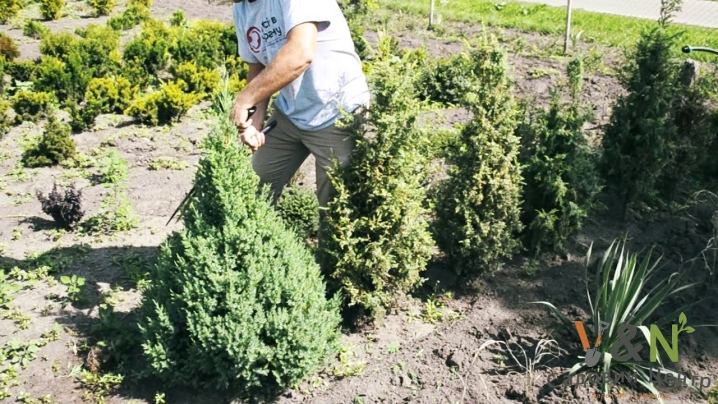
If the plant has to be destroyed, all plant residues will have to be removed from the soil. Additionally, the land is cultivated by means of "Quadris" and "Tilt". Biorella cancer develops in the same way as nectriosis, however, it leads to deep lesions of the wood, to stepped lacerated ulcers. Treatment consists in cutting out the diseased parts and treating them with antifungal compounds, especially in the cut off areas.
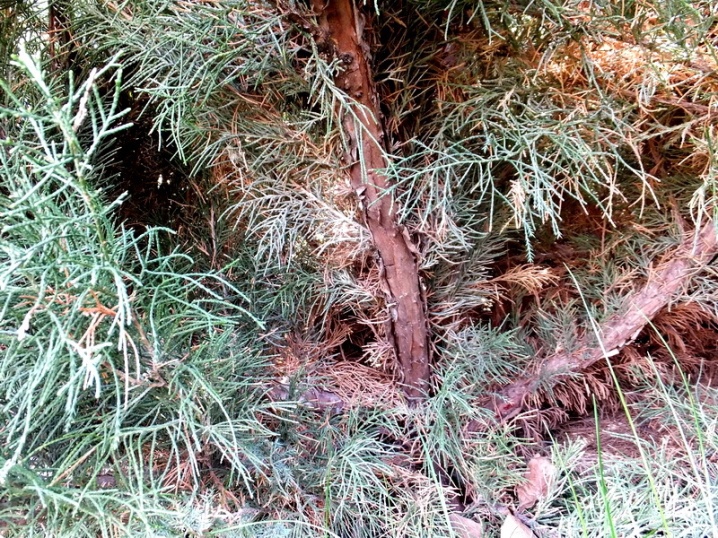
Of the pests for "Stricta" are mainly dangerous:
- spider mites;
- juniper scale insects;
- aphids.
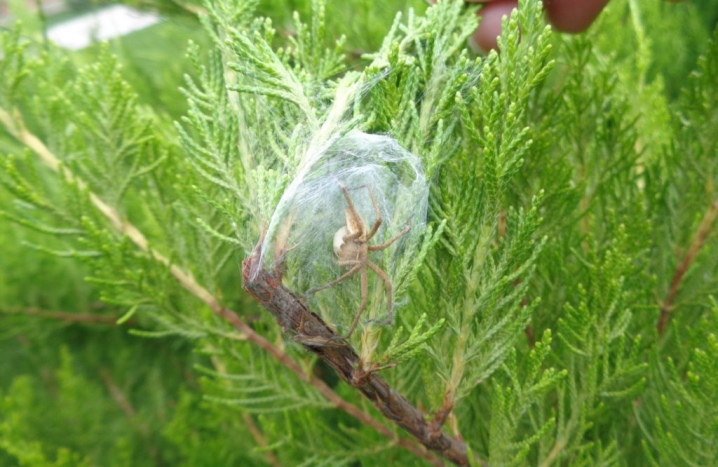
To keep the aphids less likely to get to the juniper, it should be kept away from the garden rose. Insecticide treatment should be done as soon as harmful insects are found. Experts advise treating nearby trees and bushes so that they do not become a springboard for "aggressors". Juniper sawflies are destroyed with Kinmix or Bi-58. Additionally advise dig up the trunk circle, manually fight insect larvae and nests.
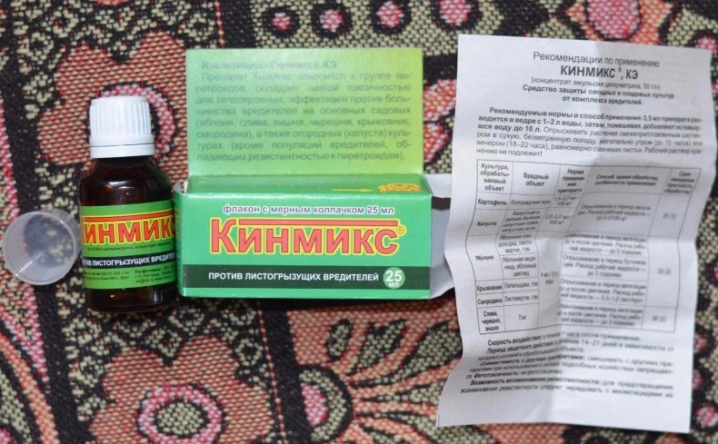
For information on how to properly care for the Chinese juniper "Strickta", see the next video.



































































The comment was sent successfully.